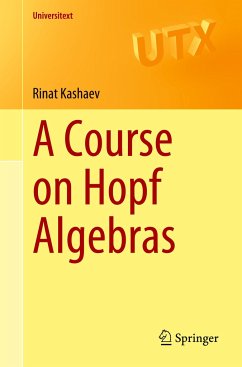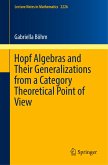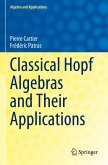This textbook provides a concise, visual introduction to Hopf algebras and their application to knot theory, most notably the construction of solutions of the Yang-Baxter equations.
Starting with a reformulation of the definition of a group in terms of structural maps as motivation for the definition of a Hopf algebra, the book introduces the related algebraic notions: algebras, coalgebras, bialgebras, convolution algebras, modules, comodules. Next, Drinfel'd's quantum double construction is achieved through the important notion of the restricted (or finite) dual of a Hopf algebra, which allows one to work purely algebraically, without completions. As a result, in applications to knot theory, to any Hopf algebra with invertible antipode one can associate a universal invariant of long knots. These constructions are elucidated in detailed analyses of a few examples of Hopf algebras.
The presentation of the material is mostly based on multilinear algebra, with alldefinitions carefully formulated and proofs self-contained. The general theory is illustrated with concrete examples, and many technicalities are handled with the help of visual aids, namely string diagrams. As a result, most of this text is accessible with minimal prerequisites and can serve as the basis of introductory courses to beginning graduate students.
Starting with a reformulation of the definition of a group in terms of structural maps as motivation for the definition of a Hopf algebra, the book introduces the related algebraic notions: algebras, coalgebras, bialgebras, convolution algebras, modules, comodules. Next, Drinfel'd's quantum double construction is achieved through the important notion of the restricted (or finite) dual of a Hopf algebra, which allows one to work purely algebraically, without completions. As a result, in applications to knot theory, to any Hopf algebra with invertible antipode one can associate a universal invariant of long knots. These constructions are elucidated in detailed analyses of a few examples of Hopf algebras.
The presentation of the material is mostly based on multilinear algebra, with alldefinitions carefully formulated and proofs self-contained. The general theory is illustrated with concrete examples, and many technicalities are handled with the help of visual aids, namely string diagrams. As a result, most of this text is accessible with minimal prerequisites and can serve as the basis of introductory courses to beginning graduate students.








